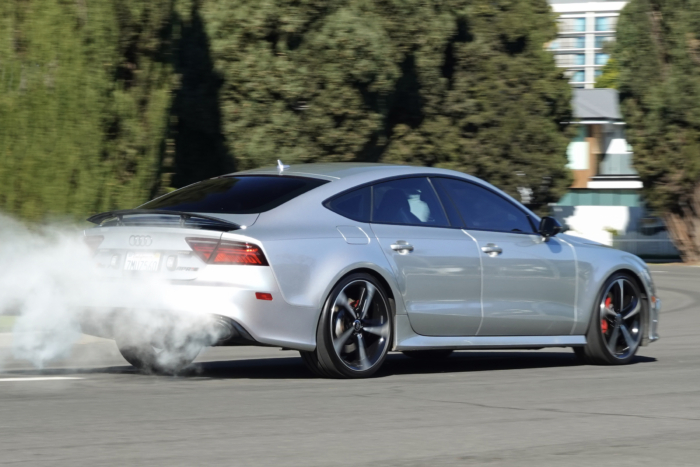Cars in the United States have been behind the curve for years when it comes to headlights (headlamps). Finally, Congress greenlights adaptive headlight tech in the U.S.
If you’re used to getting blinded by high beams while driving at night, you must live in America. Headlight technology is summarily better elsewhere in the developed world and has been for years.
That’s because outdated legislation has blocked automakers from installing adaptive driving beam (ADB) headlights in cars sold in the United States. The innovation, which surfaced years ago, enables headlights to avoid negative (and dangerous) outcomes like blinding oncoming drivers and glaring against reflective signs.
ADB headlights are always on the high-beam setting. Sensors and cameras make them “adapt,” detecting other drivers and progressively shading the area to prevent glare. The easiest way to see how they work is to watch them in action:
American headlights, on the other hand, still operate on a binary system: low beam or high beam, nothing in between. That’s due to a law written in the ’60s, which stipulates that low beams and high beams must not be activated simultaneously unless very specific conditions apply.
Soon, the recently passed Infrastructure Investment and Jobs Act (H.R.3684) will change that.
Section 24212, titled “Headlamps,” specifies updates to Federal Motor Vehicle Safety Standard Number 108, which governs “lamps, reflective devices and associated equipment.” Within 2 years, the bill will require the following changes to the existing rules:
(b) Rulemaking. — Not later than 2 years after the date of enactment of this Act, the Secretary shall issue a final rule amending Standard 108 —
(1) to include performance-based standards for vehicle headlamp systems —
(A) to ensure that headlights are correctly aimed on the road; and
(B) requiring those systems to be tested on-vehicle to account for headlight height and lighting performance; and
(2) to allow for the use on vehicles of adaptive driving beam headlamp systems.
Cars in Europe and Canada have had adaptive headlamps since the mid-2010s. The benefits are, so to speak, blindingly obvious: a 2019 study by AAA found that adaptive headlamps made European roads 86% brighter at night than those in the U.S.
Implementing the system will take some time. After the infrastructure bill becomes law, entities like the National Highway Traffic Safety Administration will spend the next 2 years codifying rules and determining test protocols.
But, once it happens, there’s reason to believe it will be a game-changer. The first item on the National Safety Council’s list of how to make night driving safer? “Aim your headlights correctly.”
Sure would be cool if they did it themselves.










